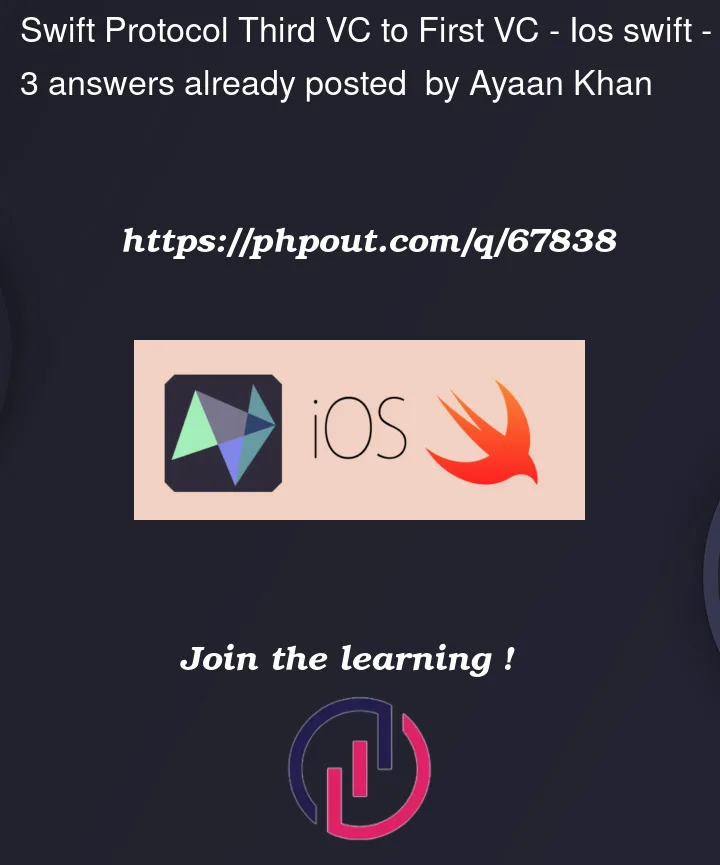I need to pass a String and Array from my Third ViewController to my First ViewController directly using protocol/delegate, I have no problem doing it from VC 2 to VC 1 but I’m having a hard time with this. Also after clicking a button in my VC3 I need to go back to VC 1 and update the VC UI how would I do that? Would that have to be in viewdidload?
This in Swift UIKit and Storyboard




3
Answers
What you need is unwind segue. Unwind segue will act like segue, only backward, popping, in this case, VC2. You can read here for more information.
Updating data code would be put in a function similar to
prepareToSegue()but for unwind segue in your VC1.Example of the function inside VC1:
You need two protocols, and your firstVC and SecondVC have to conform those. When pushing new ViewController you need to give the delegate of that ViewController to self. On your third VC, when you click the button you need to call your delegate and pass your data to that delegate method, then repeat the same for other.
For FirstVC
You handle your navigation from your root. For better experience you can use something like coordinator pattern to handle it.
Second VC is something that you just need to pass parameters.
Here is a different approach that accomplishes what you described by performing a Present Modally segue directly from View Controller 3 to View Controller 1, and sharing the string and array values by way of
override func prepare(for segue....In Main.storyboard, I set up 3 View Controllers, and have segues from 1 to 2, 2 to 3, and 3 to 1. These are Action Segues directly from the buttons on each VC, which is why you won’t see

self.performSegueused inside any of the View Controller files. Here is the picture:In the first view controller, variables are initialized (with nil values) that will hold a String and an Array (of type Int in the example, but it could be anything):
The second view controller doesn’t do anything except separate the first and third view controllers, so I didn’t include its code.
The third view controller assigns the new values of the string and array inside
prepare(this won’t be done unless you press the middle button first, to demonstrate both possible outcomes in VC 1). This is where your string and array get passed directly from 3 to 1 (skipping 2 entirely).Note that there is an
IBOutletto the label on the first View Controller which contains the text to be updated.After visiting the third view controller, pressing the "Update First VC Text" button, and then performing the segue back to the first, here is how it will look:

This doesn’t address the part about protocols and delegates in your question (as I’m not sure how they’re being used in your program, and other answers have already addressed that), but it illustrates the method of transferring variables directly from one View Controller to another without unwinding segues or using the
UINavigationController.